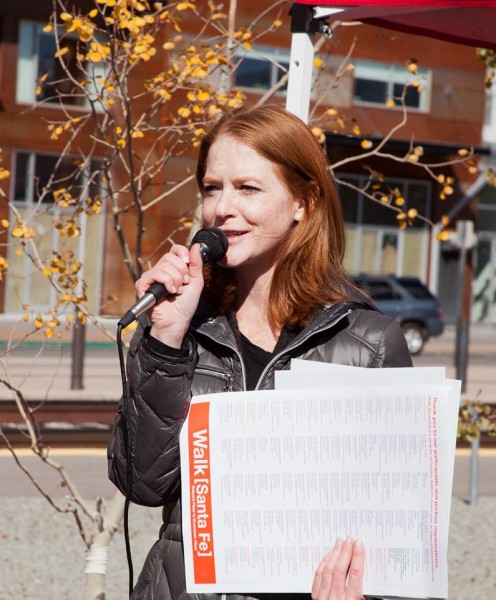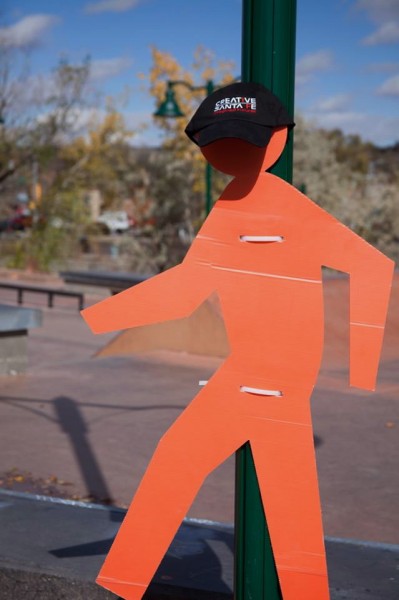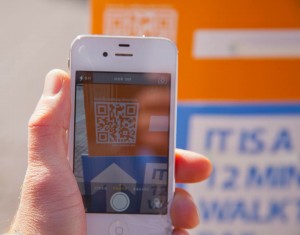Tags
Related Posts
Share This
WALK [Santa Fe]
Jeff Speck, city planner and author of Walkable City, articulated the solution to issues of environment and economy like this: “if you like nature, stay the heck away from it!”
The author, with his many supporters across the country, has emphasized the solution for sustainable living to be centered in society’s migration back to the city. Why the city? Simply, because of its walkability. As Speck puts it, rural residencies and suburban areas are suffering from their dependency on the “gas-belching, time-wasting, life-threatening” automobile. Santa Fe is no exception. In one of his many national addresses, Speck says that “the walkable city,” like Santa Fe, “is not just a nice, idealistic notion, rather, it is a simple, practical-minded solution to a host of complex problems we face as a society.” Clearway finding, the integration of signage within a city, can make a huge difference.
“It’s all about perception,” says Cyndi Conn, executive director of Creative Santa Fe, a non-profit organization dedicated to improving Santa Fe’s creative economy and lifestyle through community collaboration. “Santa Fe is totally walkable; there’s just a perception that it’s not because there’s no clear wayfinding.” Conn and her team recently implemented a month-long project known as WALK [Santa Fe], an experiment involving temporary signage in the downtown area meant to gather data for permanent clear signage.
“The project,” Conn says, “is part of a much broader picture of looking at how cities grow and how leadership works.” As an innovative organization, Conn says Creative Santa Fe “helps the city understand that there are new solutions.”
In the case of WALK [Santa Fe], Conn explains that the project has been integrated from the national initiative WALK [Your City], founded by entrepreneurial designer Matt Tomasulo. In other cities WALK [Your City] has been conducted as a guerrilla project, without approval. In order to avoid the unnoticed guerrilla initiative, Conn says Creative Santa Fe worked with the City of Santa Fe’s Convention and Visitor’s Bureau, Department of Transportation, local businesses and the community in order to “not just prototype but to start to creat[ing] long term solutions that make change.”
With its many collaborators, WALK [Santa Fe] is currently the largest WALK [Your City] project in the country. Katelyn Peer, program coordinator for Creative Santa Fe and recent graduate from SFUAD Film School, shares that after placing an order of 125 temporary signs through WALK [Your City] website, Creative Santa Fe was enthusiastically contacted by WALK saying that Creative Santa Fe’s order had broken its website! No city organization had ordered that many signs.
The signs, which can be found this month on some of Santa Fe’s downtown street poles, include a destination and a walking time. Also included on the signs are QR codes, a code that can be photographed by a smart phone and linked to google maps that show a clear path from their current position to their destination.
In addition to signage, Creative Santa Fe created maps with walking trails and will be hosting collaborative events throughout this month to bring about community involvement.
Peer explains that Santa Fe is a city that considers the needs of both its locals and its out-of-state visitors; signage with simple directions makes the idea of walking more plausible.
“Even as I was putting up a sign for the Georgia O’Keeffe Museum,” Peer says, “there were like five people who came up to me asking where the Georgia O’Keeffe Museum was. Clearly, something is wrong here.”
When there’s no required commitment from businesses, Peer explains in regards to the prototyping nature of WALK [Santa Fe], “it’s amazing how quickly everyone becomes fearless and really tries something new.” In planning for the month-long installation, Creative Santa Fe wanted to ensure community buy in. “Lets make sure what we’re doing actually works,” Peer says, “and lets be able to speak it afterwards.”
So far the feedback, Conn says, has been positive and supportive. “When you take a risk…in Santa Fe, you are setting yourself up for a lot of public commentary and I am so pleasantly surprised by how many people understand the importance of walkability, the importance of having clear language and clear signage to really show how to get places.” At the end of November, Conn explains, it’ll be her and Peer’s job to prove to the city, with data and supportive letters from community and businesses, that clear signage is wanted.
The WALK [Santa Fe] project will also improve upon creative placemaking, a term which the Department of Economic and Community Development defines as “creating cities where people want to live, to work, to play and to learn.” In order to improve upon placemaking in Santa Fe, Peer explains, “it’ll take more than just putting up signs, but it’s a cost-effective place to start.” Peer adds that experimental projects like WALK [Santa Fe], which last for a month, allow the public to experience change and express their concerns or opinions. “It’s clear to you and I, when [a] place goes through a transformation,” Peer says, “that [experimentation] does matter and it does make a difference. Now it’s a question of how do you prove it?” Conn and Peer say the positive responses they’ve received so far is a fantastic start.
For information on WALK [Santa Fe] events this month visit http://creativesantafe.org/







![WALK [Santa Fe] stencil. Photo by Katelyn Peer](https://jackalopemagazine.com/wp-content/uploads/2013/11/Katelyn-Peer.jpg)

![WALK [Santa Fe] map. Photo by Cliff Shapiro](https://jackalopemagazine.com/wp-content/uploads/2013/11/Cliff-Shapiro2-399x600.jpg)
![WALK [Santa Fe] signs in downtown Santa Fe. Photo by Charlotte Martinez](https://jackalopemagazine.com/wp-content/uploads/2013/11/IMG_9563-400x600.jpg)

 Jackalope Magazine is the student magazine of Santa Fe University of Art and Design. Building on the interdisciplinary nature of our education, we aim to showcase the talent of our university and character of our city.
Jackalope Magazine is the student magazine of Santa Fe University of Art and Design. Building on the interdisciplinary nature of our education, we aim to showcase the talent of our university and character of our city.
Recent Comments